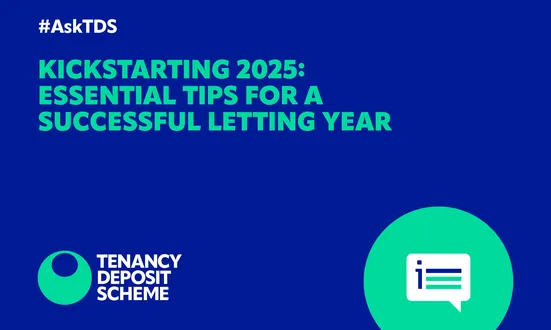Tenancy Deposit Scheme (TDS) is a Government approved scheme for the protection of tenancy deposits offering both Insured and Custodial deposit protection schemes. We also provide free and impartial adjudication for disputes that arise over the deductions from the tenancy deposits that we protect. This article has been written in response to a tenant’s query.
In this week’s #AskTDS, a tenant asks whether they should pay their deposit before or after signing a tenancy agreement.
As a deposit is usually a significant amount of money, tenants need to be aware of when to pay their tenancy deposit.
You should only pay your deposit after you have read and understood the terms of the tenancy agreement and it has been signed. Your landlord should not ask you to do so before. When you have paid the deposit, your landlord will have 30 days to protect the deposit with a government approved scheme, such as the Tenancy Deposit Scheme in either the Insured or Custodial deposit protection schemes.
How is my deposit calculated?
To ensure that you don’t overpay, it is important to be aware of the maximum amount of deposit that you will be required to pay.. As of June 1st, 2019, holding deposits are capped at one week’s rent and security deposits are capped at five weeks’ rent, where the annual rent is less than £50,000 and six weeks’ rent where the annual rent is £50,000 or more. The deposit cap is only applicable in England.
Where is my deposit kept once I have paid it?
By law, your landlord or agent must protect your deposit in one of two ways.
Your deposit can be protected in an Insured scheme, which means that your landlord or agent will be in possession of your deposit throughout your tenancy. Should your landlord wish to make a claim on your deposit at the end of the tenancy, which you do not agree to, and a dispute is raised, your deposit protection scheme will require the landlord to pay the disputed deposit amount into our protection scheme and a free and impartial dispute resolution service will be provided to settle the dispute.
Alternatively, your deposit can be protected in a Custodial deposit protection scheme, which means that on receipt of the deposit from you, your landlord or agent will pay the deposit directly to the relevant tenancy deposit protection provider. In this case, your deposit protection scheme will hold the full deposit for the duration of the tenancy. Should your landlord wish to make deductions from your deposit at the end of the tenancy, for example, cleaning, broken items or damage caused during the tenancy, beyond fair wear and tear, a claim can be made via the tenancy deposit protection provider. In the event agreement cannot be reached, a free and impartial dispute resolution service will be provided.
At the end of the tenancy, should your landlord have no proposed deductions, all of your tenancy deposit should be returned within 10 working days of request.
The landlord or agent must provide you and anyone who paid the deposit on your behalf (known as a ‘relevant person’) with specific details of the deposit protection and a leaflet explaining how the tenancy deposit protection scheme provider works. This is called prescribed information. It must be issued within 30 days of receiving the deposit.
Click here for a prescribed information template and scheme leaflet.
How can TDS help me as a tenant if a dispute occurs?
In situations where attempts have been made to reach an agreement on proposed deductions, but they have been unsuccessful, and as long as the deposit is protected with TDS, we are able to provide a free dispute resolution service, decided by an adjudicator.
How do I start/respond to a dispute?
In TDS Insured, simply look up your deposit using either the certificate code or the tenancy information here. You will be able to start a dispute from the tenancy summary page. You will not at this stage be asked to provide evidence. After you have raised a dispute the other party will be invited to respond and be given 10 working days in which to do so.
For TDS Custodial, you should raise a request for repayment by logging into your online account. The other party will then be given 10 working days to agree to the repayment of your deposit to you or set out any claims they wish to make. If you as a tenant do not agree with the landlord/agent’s repayment request proposal, the deposit will enter our adjudication service.
When responding to a dispute, you will be invited to submit evidence when it is time to do so. You can view the other party’s evidence and submit your own through your online account.
For more information on tenancy deposit protection for tenants, visit our frequently asked questions page to build your knowledge. To access the TDS FAQs page please click here.
About TDS
The Tenancy Deposit Scheme is part of The Dispute Service (TDS), the largest tenancy deposit protection (by value) and resolution service provider in the UK making life easier for tens of thousands of agents, landlords, developers, and millions of tenants and homebuyers.
Our award-winning customer service is highly rated on both Trustpilot and Google, and we’re backed by the NRLA, Propertymark and RICS.
We provide quick and hassle-free online deposit protection, free guides and information in our online help centre, free dispute resolution and free mid-tenancy mediation for tenants and landlords.
Our free tenant lifecycle app, tlyfe, makes renting smarter. Manage your TDS deposit, get pre-qualified, build your credit ratings, and more.

Other news stories


